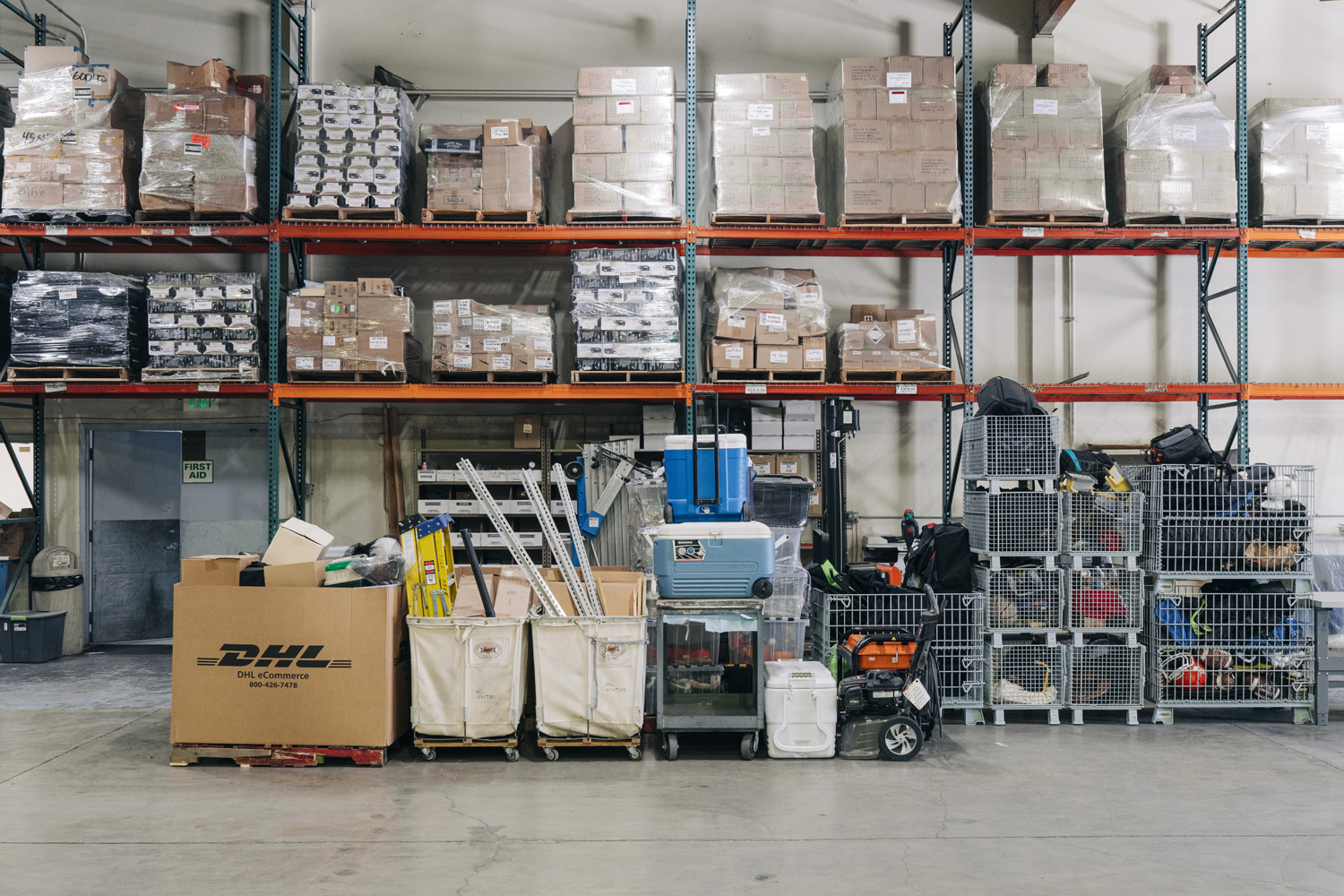When a client’s fulfillment center suddenly collapsed, Medallion Fulfillment & Logistics stepped in to prevent a business catastrophe. This case study details how our rapid response and comprehensive fulfillment services not only saved our client’s inventory but also set them on a path to greater efficiency and growth.
Executive summary
When an ecommerce business owner faced imminent collapse after his fulfillment provider went bankrupt, Medallion Fulfillment & Logistics executed an emergency inventory rescue. By swiftly relocating, cataloging, and managing his extensive inventory, we prevented a total business disruption. Our implementation of advanced technology and personalized support has since saved the client thousands of dollars and fostered significant business growth.
Introduction
Alvin R., a Ph.D. based in Santa Monica, California, runs a niche ecommerce business selling educational counseling videos and brochures. For years, he operated his mail-order company successfully, building a substantial inventory to serve his customer base. Unlike many modern businesses, Alvin preferred to manage his operations without computers, relying on mail, telephone, and fax. This unique business model required a fulfillment partner with the flexibility to accommodate his non-digital workflow while still providing efficient service.
The Problem
The crisis began when Alvin received a frantic call: his fulfillment center had gone out of business overnight. The situation was dire. The local authorities were on their way to lock the warehouse doors, which would trap his entire inventory indefinitely.
For a business like Alvin’s, which relies entirely on its physical stock, losing access to inventory meant losing the business itself. He faced several critical challenges simultaneously:
- Imminent loss of all inventory: With the warehouse about to be sealed, Alvin was moments away from being unable to fulfill any orders.
- Complete business disruption: Without products to ship, his revenue would drop to zero, and his company’s reputation would be destroyed.
- No immediate alternative: Finding a new fulfillment partner and transferring a large inventory typically takes weeks or months—time Alvin didn’t have.
- A complex, non-standard inventory: His stock of videos and brochures was considerable, and managing it required careful organization.
Alvin needed more than just a new warehouse; he needed a lifeline. He needed a partner who could act immediately and handle his unique operational needs without missing a beat.
The Solution
Alvin called us at Medallion in a state of panic, and we understood the urgency. We treated his emergency as our own. Without waiting for contracts or formalities, we mobilized our team.
- Emergency Inventory Rescue: We immediately rerouted our trucks and dispatched a crew to Alvin’s defunct fulfillment house. In a race against time, our team loaded his entire stock and moved it to our secure facility just before the doors were locked by the authorities. While other customers of the failed warehouse lost access to their goods for months, Alvin’s inventory was safe.
- Rapid Onboarding and Fulfillment: Our staff worked quickly to catalog and organize Alvin’s extensive inventory. Within record time, we had his products stored and were ready to resume shipping orders. This rapid transition ensured there was virtually no disruption to his business operations.
- Adapting to a Unique Workflow: We respected Alvin’s preference for a non-computerized business model. Our team established a seamless process to handle his orders via mail, phone, and fax while using our own state-of-the-art systems to manage the backend.
- Modernizing for Efficiency: Using our advanced computer technology, we provided Alvin with detailed inventory tracking, expedited order processing, and comprehensive accounting records. This gave him a level of insight and control over his business that he previously lacked.
- Future-Proofing the Business: Recognizing that his VHS video inventory was becoming obsolete, we worked with Alvin to transition his products to DVD. Medallion’s on-demand duplication services for small media orders allowed him to modernize his offerings and further increase sales without a large upfront investment.
Result
Our partnership with Alvin yielded significant, measurable results that not only saved his business from the brink but also helped it thrive. As Alvin himself has said, “The executives at Medallion Fulfillment & Logistics have been here with me through ‘thick and thin’. These guys are really dedicated to what they do… given the amount of detail that is required in the fulfillment business, I don’t know how they do it!”
- Avoided a Complete Business Shutdown: Our immediate action prevented Alvin from losing his inventory and allowed him to continue fulfilling orders without interruption.
- Saved Thousands of Dollars: By implementing efficient inventory management and order processing systems, we significantly reduced his operational costs.
- Improved Operational Oversight: Our technology provided Alvin with precise tracking of his inventory, orders, and accounts receivable, empowering him to make better business decisions.
- Supported Sustainable Growth: The transition from VHS to DVD opened up new sales opportunities, and our scalable services ensured we could support his growing business needs.
- Peace of Mind: Alvin has been a satisfied customer ever since that initial crisis. He knows he has a reliable, financially sound partner he can count on, no matter what challenges arise.
Conclusion
The story of our partnership with Alvin is a powerful example of Medallion’s core values in action. As a family-owned company with over 30 years in the fulfillment center business, we understand the pressures entrepreneurs face. We pride ourselves on being more than just a service provider; we are a strategic partner dedicated to our clients’ success. Our ability to respond decisively in a crisis and provide flexible, personalized solutions sets us apart.
Whether you’re facing an emergency or simply looking for a more reliable fulfillment partner to help you grow, Medallion has the experience and infrastructure to support your unique needs. We offer scalable services that can grow with you, from basic warehousing to comprehensive order processing, inventory management, and customer service.
Let us handle the logistics so you can focus on what you do best—building your business.
Ready to partner with a fulfillment provider you can trust? Contact Medallion Fulfillment & Logistics today to learn how our customized solutions can benefit your business.




